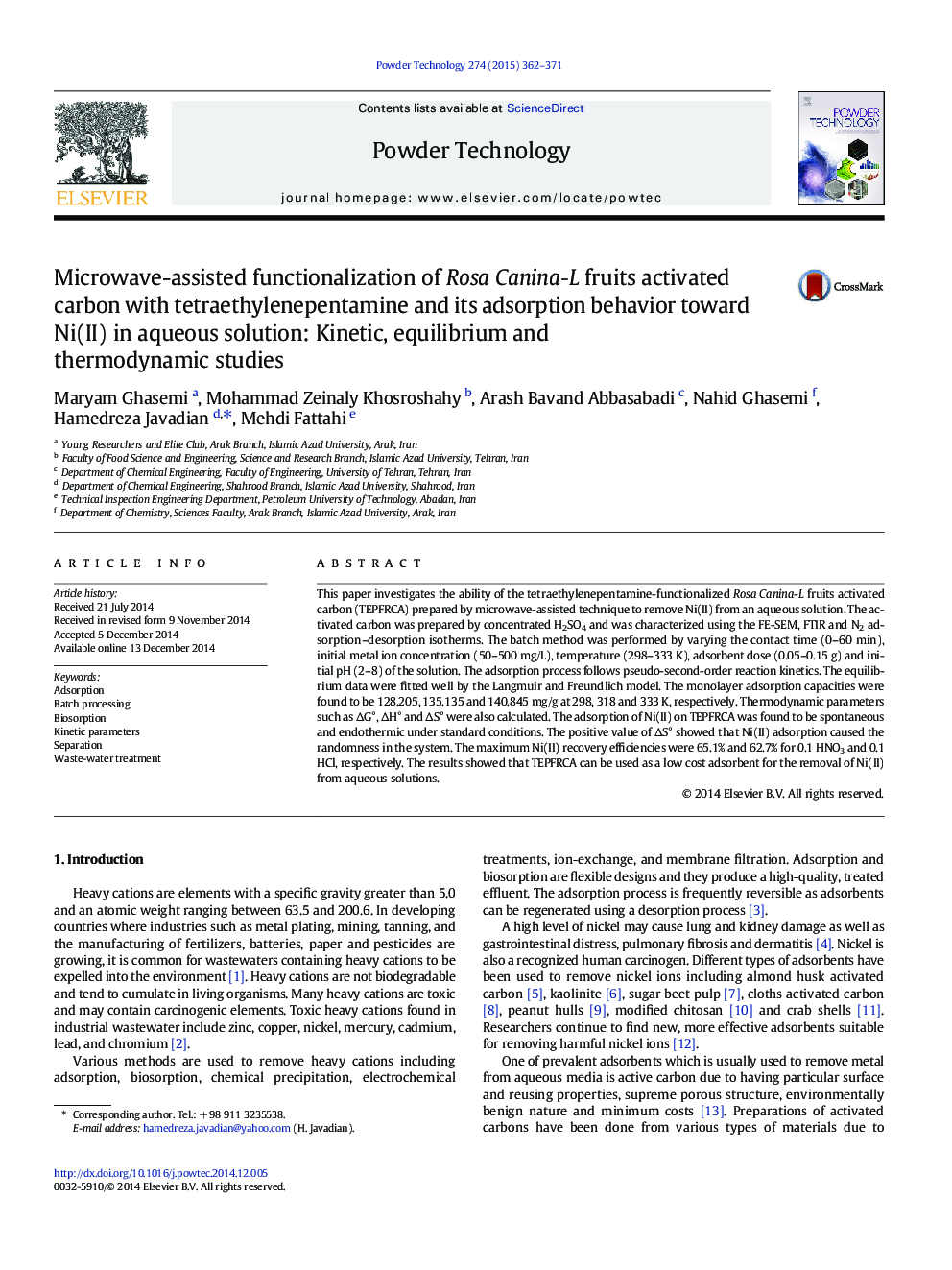| کد مقاله | کد نشریه | سال انتشار | مقاله انگلیسی | نسخه تمام متن |
|---|---|---|---|---|
| 235735 | 465645 | 2015 | 10 صفحه PDF | دانلود رایگان |

• RCA was functionalized by microwave-assisted technique.
• FTIR showed that amino-group has been successfully grafted onto the RCA.
• The isotherm indicates the hysteresis loop type IV due to mesoporous structure.
• The sorption behavior of sorbent toward Ni(II) was investigated.
• The equilibrium data were fitted well by the Langmuir and Freundlich model.
This paper investigates the ability of the tetraethylenepentamine-functionalized Rosa Canina-L fruits activated carbon (TEPFRCA) prepared by microwave-assisted technique to remove Ni(II) from an aqueous solution. The activated carbon was prepared by concentrated H2SO4 and was characterized using the FE-SEM, FTIR and N2 adsorption–desorption isotherms. The batch method was performed by varying the contact time (0–60 min), initial metal ion concentration (50–500 mg/L), temperature (298–333 K), adsorbent dose (0.05–0.15 g) and initial pH (2–8) of the solution. The adsorption process follows pseudo-second-order reaction kinetics. The equilibrium data were fitted well by the Langmuir and Freundlich model. The monolayer adsorption capacities were found to be 128.205, 135.135 and 140.845 mg/g at 298, 318 and 333 K, respectively. Thermodynamic parameters such as ∆G°, ∆H° and ∆S° were also calculated. The adsorption of Ni(II) on TEPFRCA was found to be spontaneous and endothermic under standard conditions. The positive value of ∆S° showed that Ni(II) adsorption caused the randomness in the system. The maximum Ni(II) recovery efficiencies were 65.1% and 62.7% for 0.1 HNO3 and 0.1 HCl, respectively. The results showed that TEPFRCA can be used as a low cost adsorbent for the removal of Ni(II) from aqueous solutions.
Figure optionsDownload as PowerPoint slide
Journal: Powder Technology - Volume 274, April 2015, Pages 362–371